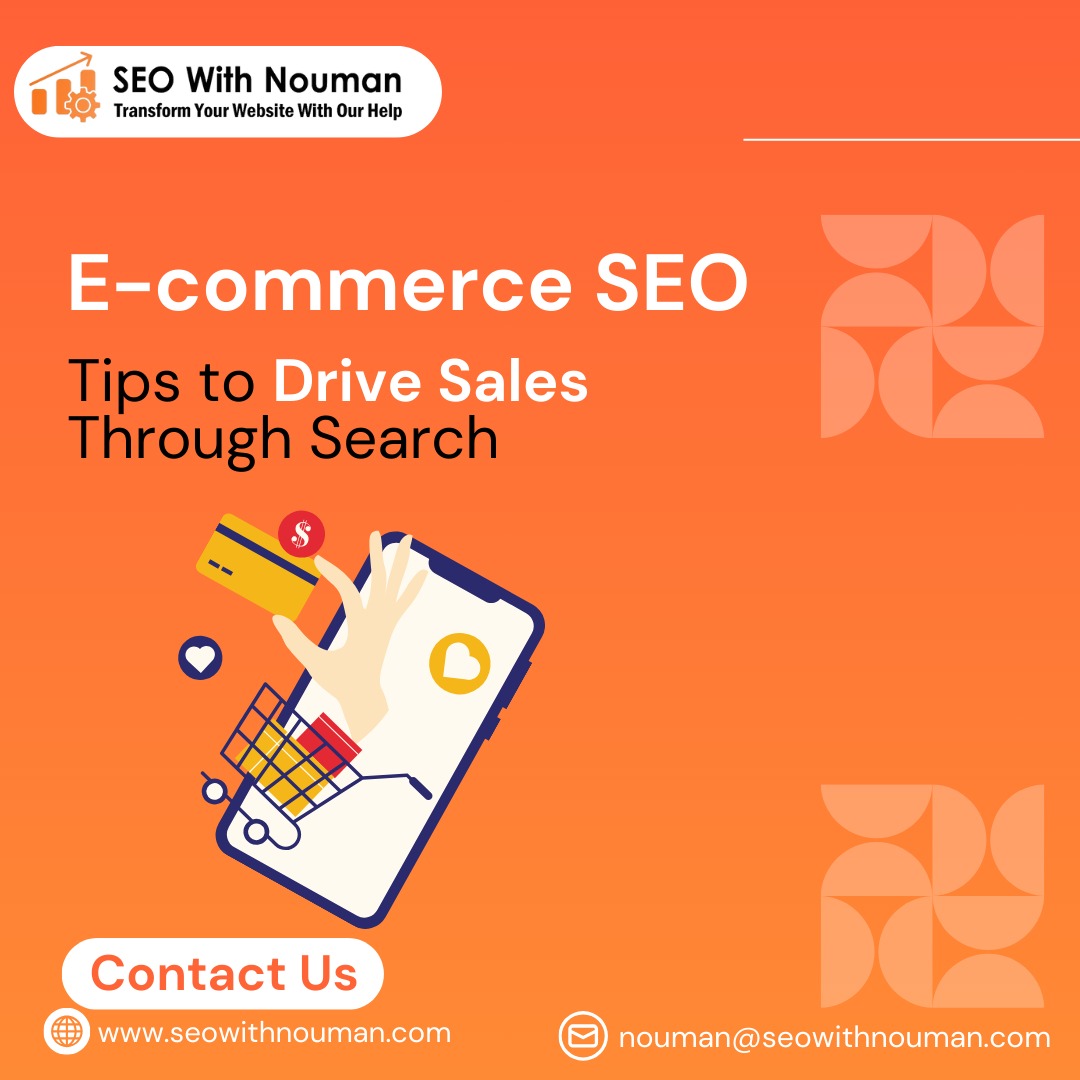E-commerce SEO: 8 Tips to Drive Sales Through Search
When it comes to an online store, you know how tough the competition is. As you know, most businesses sell their products online. You may spend money on ads, but ads can be expensive. Once you stop paying, the traffic disappears. That is why e-commerce SEO matters so much. When you rank high in search results, you attract free, long-term traffic that continues to drive sales.
E-commerce SEO makes your store easy to find on Google. When customers search for the products you sell, they should see your site at the top. If they don’t, they will buy from your competitors. With the right SEO strategy, you can bring more customers, increase sales, and grow your brand.
In this guide, we will discuss 8 E-commerce SEO tips that drive sales.
Let’s have a look!
Why E-commerce SEO Is Important?
When people want to buy something, the first place they go is Google. They type product names, compare prices, and read reviews. If your store appears in the top results, you get clicks and sales. If not, you miss out.
According to research, most customers never go beyond the first page of search results. You can’t afford to stay on page two or three. So, E-commerce SEO helps you get a higher ranking on the first page.
You cannot start SEO without keywords. Keywords are the words customers type when they search for products. If you use the wrong keywords, you may get uninterested visitors.
You should use product-focused keywords like “buy running shoes online” or “women’s leather handbags.” For this, you can use tools Google Keyword Planner or Ahrefs to find high-volume, low-competition terms. Plus, you need to use long-tail keywords because they show buyer intent. For example, “best wireless headphones under $100” is better than just “headphones.”
Once you have the right keywords, you can optimize your product pages, categories, and blog content around them.
- Optimize Product Pages
Your product pages are the core of your e-commerce site. If they are not optimized, you lose both rankings and sales.
How to Optimize Product Pages
- Unique Product Titles
You can include keywords naturally. Instead of “Shoes,” write “Men’s Running Shoes – Lightweight and Comfortable.”
- Detailed Descriptions
You must avoid copy-pasting from suppliers. You need to write original content that explains benefits, features, and use cases.
- High-Quality Images
You should add clear, zoomable images and even videos. Search engines and customers love visual content.
- Meta Tags
You need to write strong title tags and meta descriptions that encourage clicks.
- Customer Reviews
You should show reviews on product pages. They add trust and also help SEO with user-generated content.
When you optimize your product pages, you not only rank higher but also increase conversion rates.
- Improve Your Site Structure
Google and customers consider site structure. If your site structure is messy, people leave quickly, and Google cannot index your pages.
You should:
- Keep your navigation simple.
- Categories should be clear.
- Use SEO-friendly URLs. For example, “/shoes/mens-running-shoes” is better than “/product?id=123.”
- Create breadcrumbs so users know where they are on your site.
- Make sure every product is a few clicks away from the homepage.
A clean structure makes your site easy to use and improves your SEO rankings.
- Focus on Technical SEO
Technical SEO is the backbone of e-commerce sites. If your technical setup is weak, your rankings will suffer.
But the question is, how can you improve your technical SEO?
- Site Speed
Slow websites lose customers. You can use tools like Google PageSpeed Insights to improve loading times.
- Mobile Optimization
Most shoppers use phones. You need to make sure your store works smoothly on mobile.
- Secure HTTPS
Remember, customers won’t trust a store without a secure connection.
- Indexing
You should make sure that all your pages are indexed by Google. You need to block thin pages with robots.txt or noindex tags.
- Fix Errors
You should remove broken links and fix crawl errors in Google Search Console.
When your technical SEO is strong, search engines can crawl your site, and customers will experience better shopping.
- Use Structured Data
Structured data (schema markup) tells Google about your products. It helps search engines show rich results like product prices, ratings, and stock status.
You should add a schema for:
- Product name
- Price
- Availability
- Ratings and reviews
When your product appears with stars and prices in search results, you get more clicks.
- Create SEO-Friendly Content
Many e-commerce sites focus only on product pages, but that’s not enough. If you want long-term SEO traffic, you need content. Content helps you rank for more keywords, answer customer questions, and build trust.
You can create:
- Blog Posts
- Buying Guides
- FAQ Pages
- How-to Content
When you provide valuable content, you attract visitors at different stages of the buying journey. Some may not buy right away, but they will remember your store when they are ready.
- Optimize Category Pages
Category pages are often ignored, but they can rank well if optimized. These pages target broad keywords like “men’s shoes” or “kitchen appliances.”
You should:
- Add unique descriptions for each category.
- Use keywords naturally in headings and titles.
- Link to your top products from the category page.
- Include filters to improve user experience.
Remember important thing: optimized category pages can bring customers to the right products.
- Build High-Quality Backlinks
Backlinks are still one of the strongest ranking factors in 2025. For e-commerce, you need links from trusted and relevant sites.
Ways to build links include:
- Guest posting on niche blogs.
- Partnering with influencers to review your products.
- Getting featured in gift guides or product roundups.
- Creating shareable content like infographics.
You must avoid spammy links because they can hurt your rankings.
Final Words
If you run an online store, you cannot ignore SEO. It is one of the most powerful ways to drive sales through search. In this article, we have discussed the tips, from keyword research to building backlinks. If you set your store accordingly, you can get long-term success. Remember, SEO takes time, but the results are worth it. Once you rank high, you get consistent traffic and sales without paying for ads every day.


